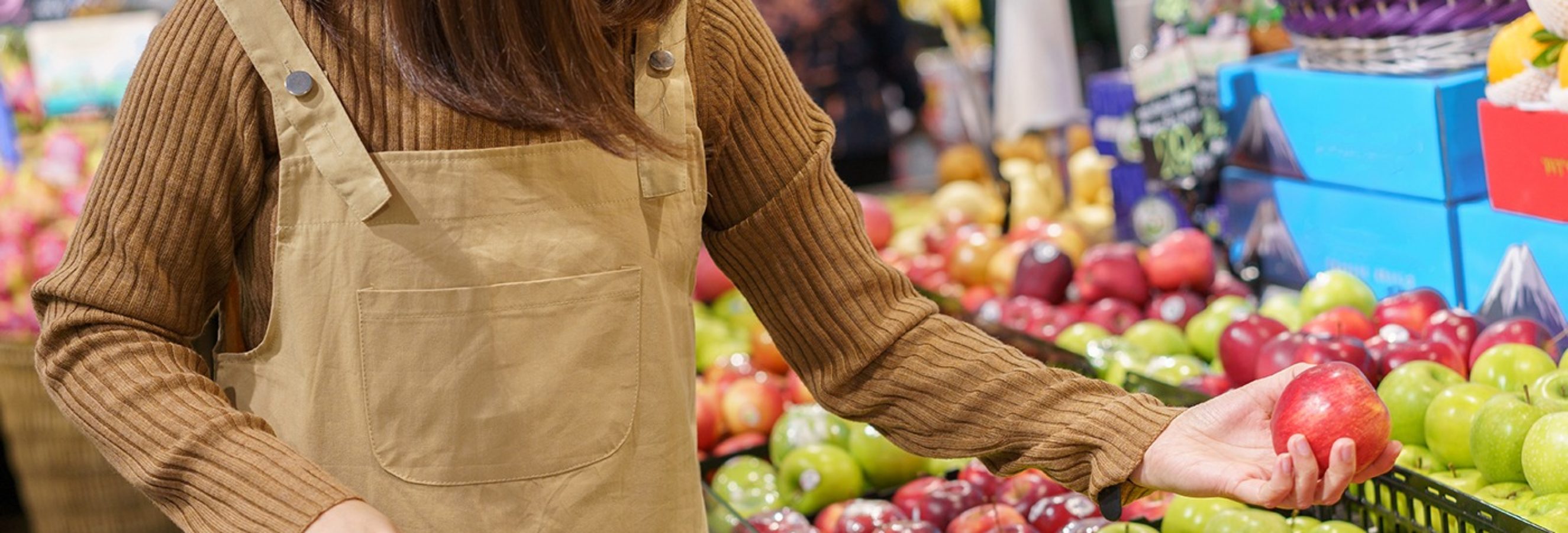The locally grown trend
According to Packaged Facts, a food industry research company, sales of local foods were expected to increase to $20 billion by 2019, up from $5 billion in 2008. Increasingly consumers seek out products that align with their personal beliefs, assessing product attributes and inspecting labels. In response, retailers and manufacturers are calling attention to their product’s key attributes.
This includes strategies such as tags boasting “locally made.” Or images of upstate farmers working in their orchards and QR codes inviting consumers to learn more about the farm their favorite yogurt is from. In a recent NielsenIQ study, buying local has the highest awareness among U.S. consumers at 46%.
What does “locally grown” mean?
Since a product’s origin is only marketed on the shelf at the retailer, it’s difficult to track a product’s origin. It will only be relevant for consumers in a specific geographic region. This leads us to the question, “what does local really mean?” With no official definition, there’s an array of interpretations among manufacturers, retailers, and consumers.
While there’s no question the term local is important to consumers, in order to deliver on what consumers want, there needs to be a mutual understanding of what consumers are actually looking for.
Unfortunately, there’s no simple answer. It depends on the product. Some think that products are local if they come from the same city, others from the same state. Some people even think a product is local if it’s made in the same country. In a recent survey of over 20,000 consumers, we see the highest agreement on a definition for local for shelf-stable goods.
Miles from the supermarket can also be used to define local. When asked what the maximum distance, in miles, from a store that a product can be produced and still be considered local, less than 50 miles had the highest consensus across all products. But the level of agreement varies by product with a high level of 50%+ for bakery and foodservice to the lows (low 20%s) for frozen and shelf stable.
Some consider buying local meaning buying all your food and other agricultural products directly from the farms where they are produced, or from farms selling to consumers at local farmers’ markets.
Then there’s the question of what grocery stores consider as local. Some stores define it by a 500-mile radius, others as little as 100 miles. Some define it by the number of regional states in which they have stores (6 state region in the case of Meijer).
Do consumers care?
While everyone has a different idea about what local means, how important is it for a product to be local? Do shoppers value some products more if they are grown locally than others? Not surprisingly, produce tops the list with 58% of consumers stating that buying local produce is important to them. Other notable products included eggs, bakery and food service.
Who feels strongest about buying local? Surprisingly, low-income consumers are more likely to say that buying local is extremely important across all products compared with the general population. Millennials seem to place emphasis on frozen foods being local. Young families say buying local is important when it comes to deli items, produce and bakery foods.
The local topic is complicated for retailers and manufacturers. With increasing globalization, products often traverse complex global supply chains to reach consumers, making traceability a technical, logistical and financial headache.
The future of locally grown
One thing is clear though: it’s an important food topic for consumers. Food transparency is becoming the industry standard. Some companies are striving to provide complete transparency through blockchain technology. This will affect how consumers shop. A local product origin strategy begins with understanding the mindset of the consumer in order to curate the perfect assortment of “locally made” products.
